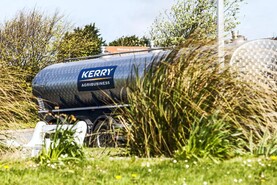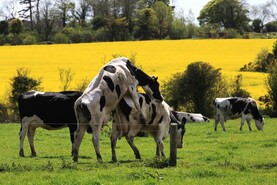Suitability for transport
EU rules on the fitness of animals to travel also influence suitability for slaughter as if an animal is not deemed fit for transport it should not be presented for slaughter. Where there is a question over an animal’s suitability for slaughter, it will be assessed by veterinary personnel and where deemed unfit will be condemned.
The reason for raising this issue now is that there are many factors highlighted in the legislation related to lambing. Pregnant females (sheep or cattle) for which 90% or more of the expected gestation period has passed are prohibited, as are animals who have given birth in the previous week.
Animals that have suffered from prolapse should not be transported where there is a risk that prolapsed organs (such as the rectum, vagina and uterus) can be easily damaged during transport, deteriorate further or where there is a risk of profuse or continuous bleeding.
The other aspects highlighted are animals presented with open wounds or infections, unable to move independently or animals suffering from severe emaciation or severe bloat.
Recording performance
At last Friday’s Sheep Ireland genetics conference, Teagasc’s Áine O’Brien delivered a presentation which showed major variation between the lamb vigour and mothering ability of progeny from different sires.
While most sires were ranked as good or very good, there was major variation in a small number of sires recording upwards of 60% of progeny exhibiting poor vigour or mothering ability. This variation can only be identified through recording. It will be built into LambPlus genetic evaluations to identify sires with superior performance but there is also a message for commercial farmers. Improving performance will only be possible where records are collected at lambing.
This is easier said than done, with Áine highlighting that lambing on average demands 25% of the average labour input on sheep farms.
Where replacements are being bred from within the flock, measures such as tagging or ear notching lambs which exhibit good vigour and born to ewes with good mothering ability will allow these records be combined with lamb performance and identify superior performing animals. Likewise ewes which are poor mothers (taking account of ewes with health issues which may influence normal mothering behaviour) should be identified to avoid a repeat of issues in subsequent years.
Genotyping costs
Also at the conference, Kevin McDermott of Sheep Ireland presented an update on plans for genotyping in 2020. Sheep Ireland will continue to subsidise genotyping costs but with demand high the cost of the samples will be €15 compared to €10 in 2019. This, Kevin says, will hopefully allow the budget to be spread over a larger number of animals.
He reminded those attending of the recent Department of Agriculture approval to allow Sheep Ireland genotyping to validate scrapie status. An analysis was also carried out on the performance of lambs based on scrapie status.
This stemmed from some breeders expressing a view that Type 4 and Type 5 lambs performed better than Type 1 and Type 2 across a number of important traits.
Kevin said the analysis showed no significant difference in performance across any of the major traits.






 This is a subscriber-only article
This is a subscriber-only article









SHARING OPTIONS: